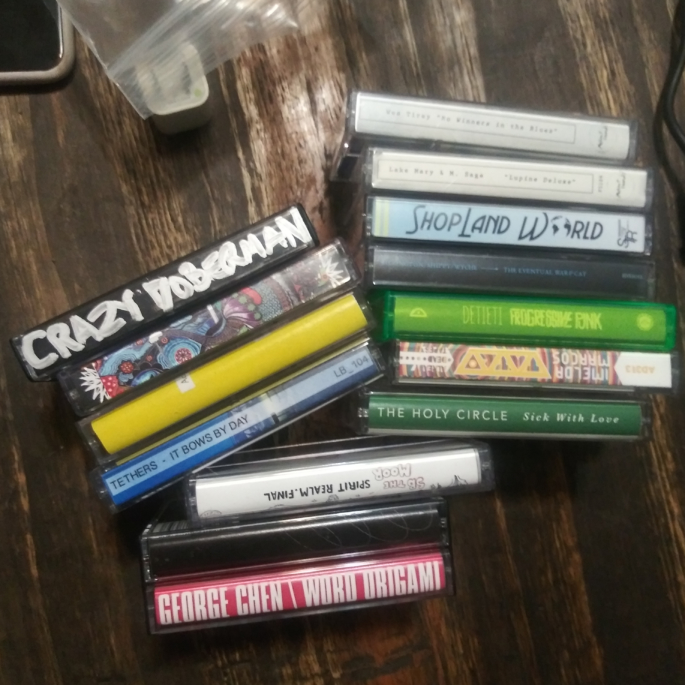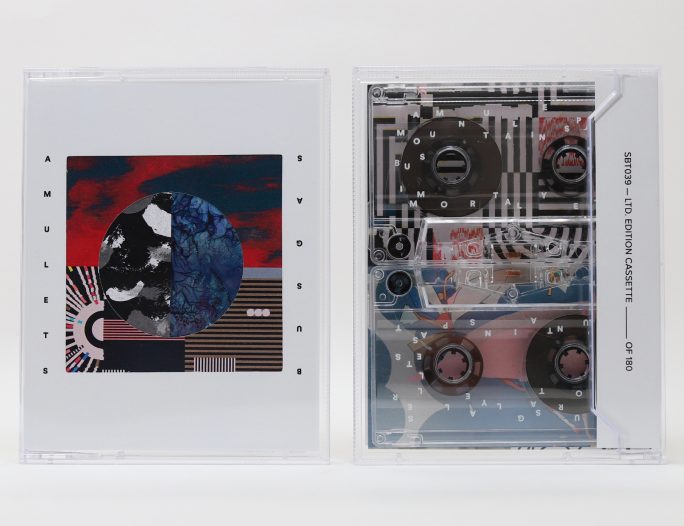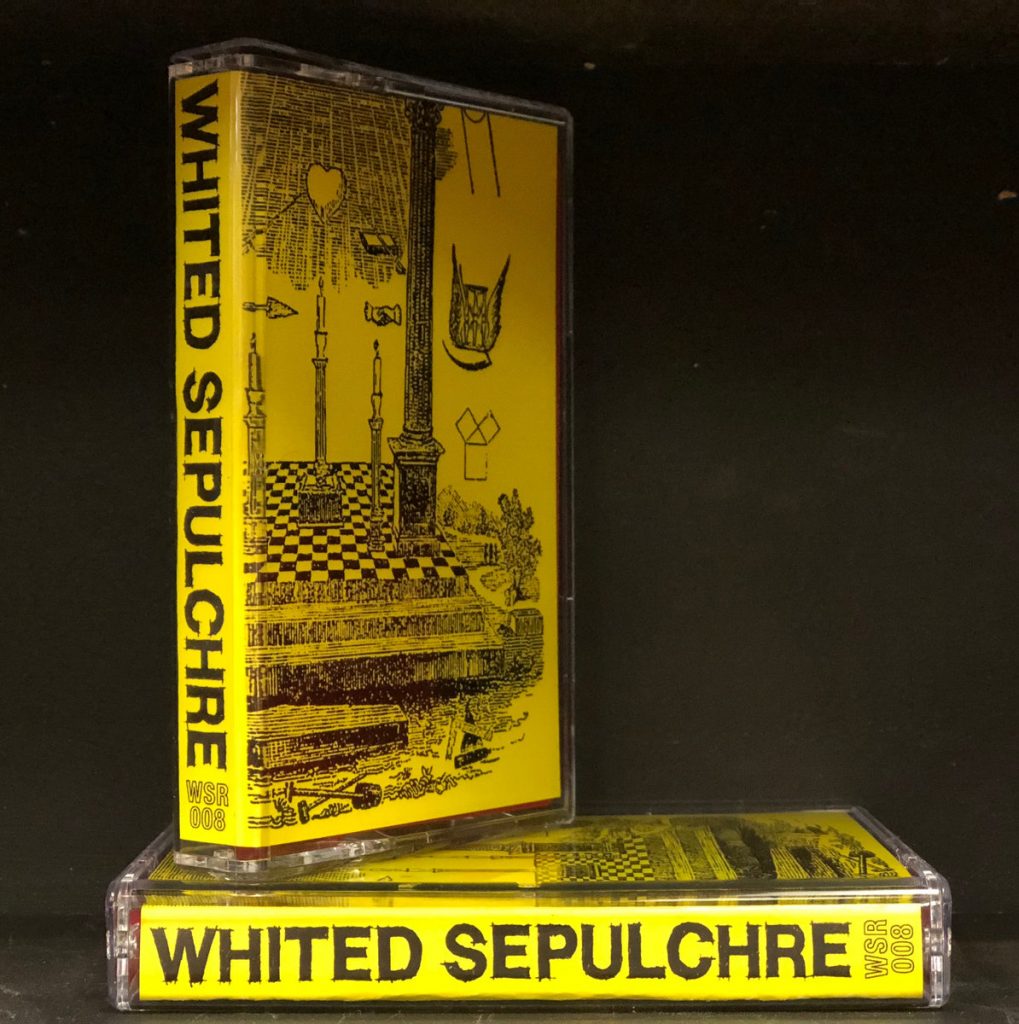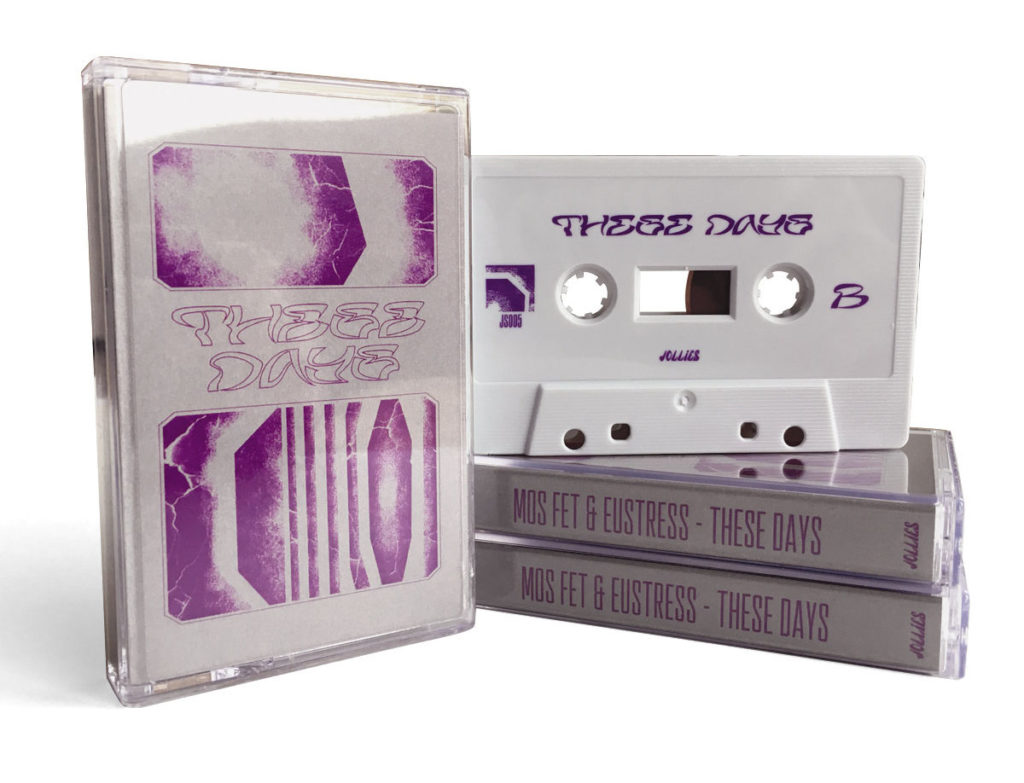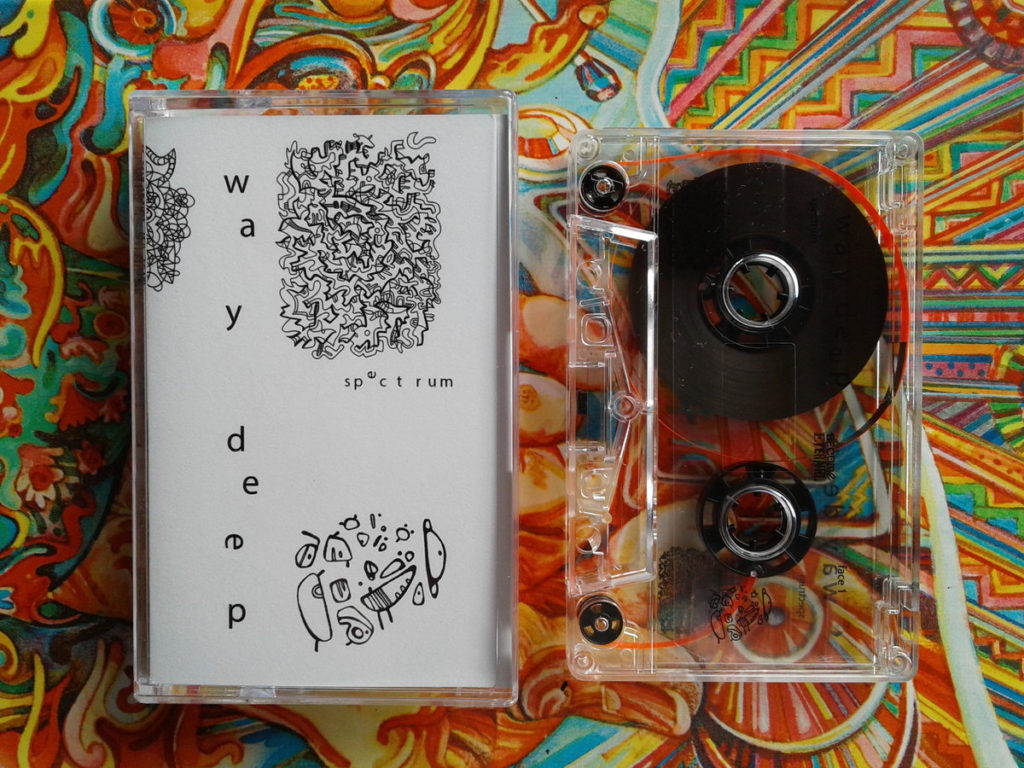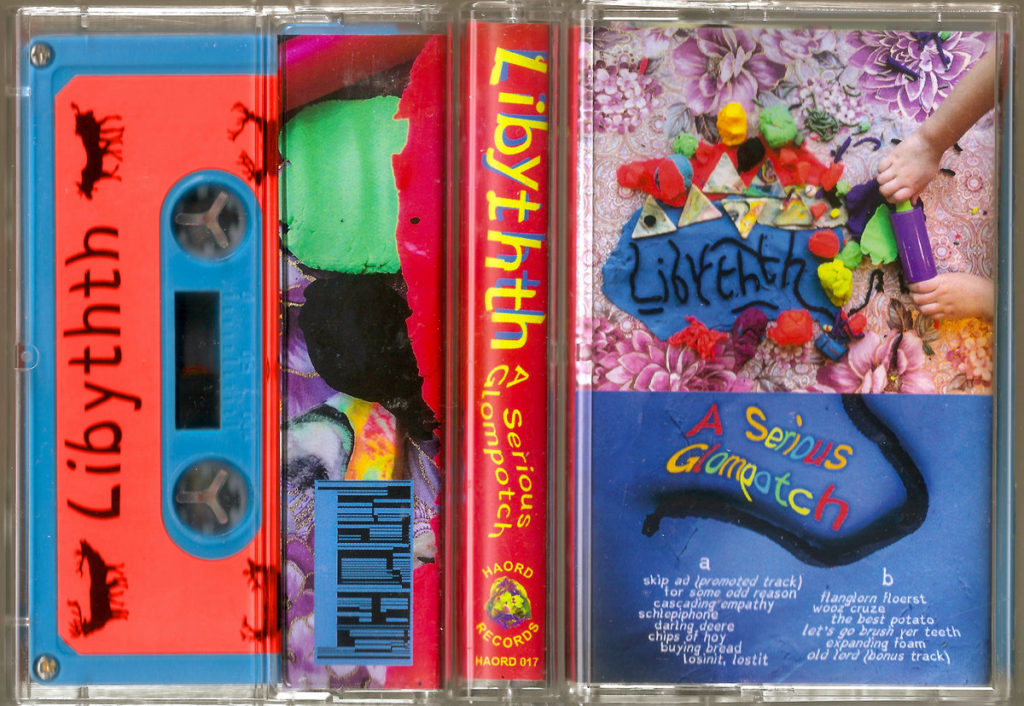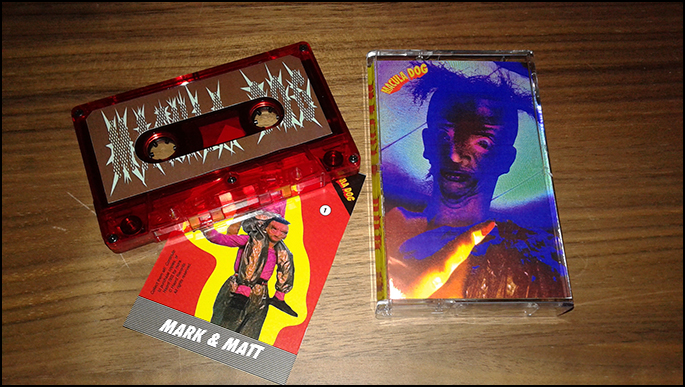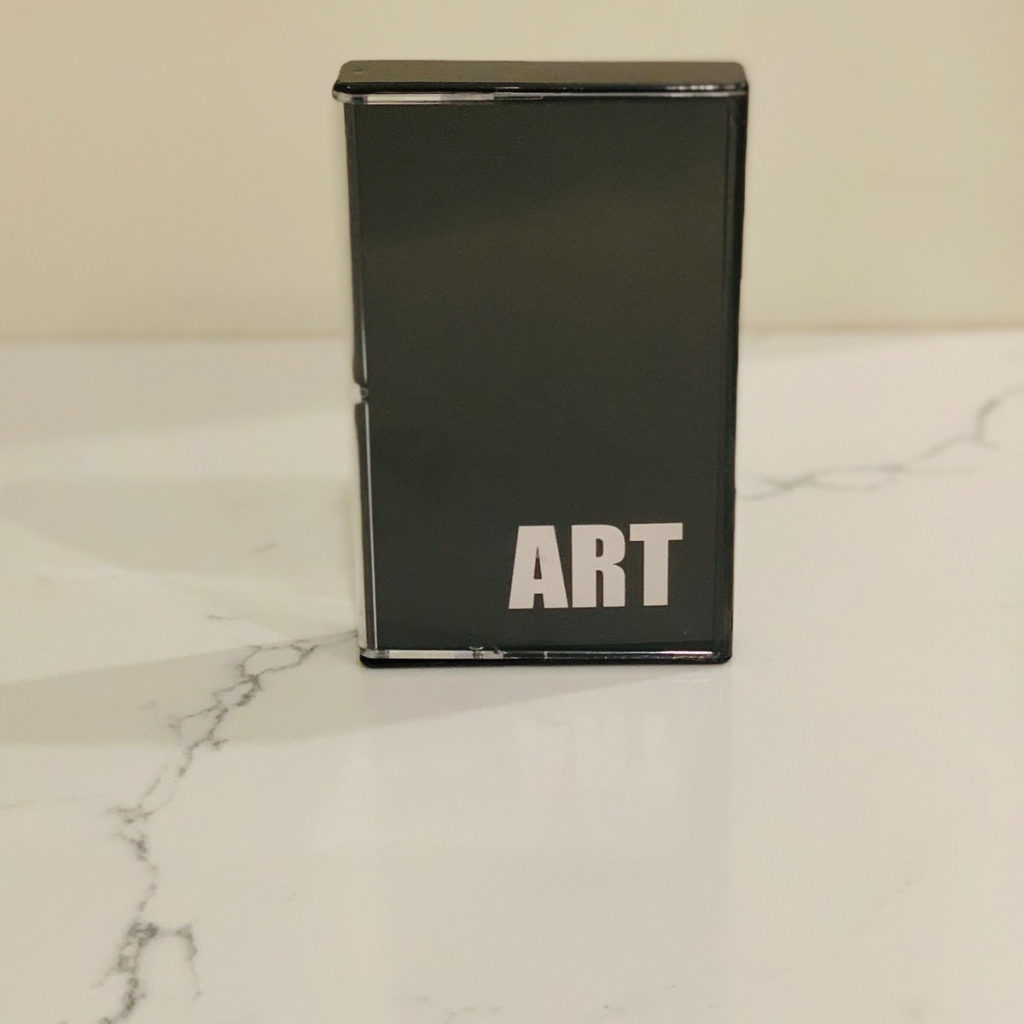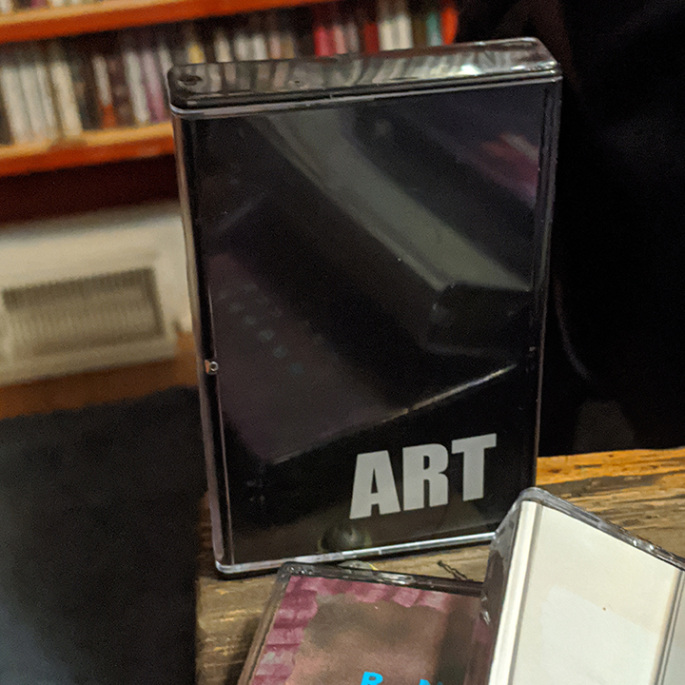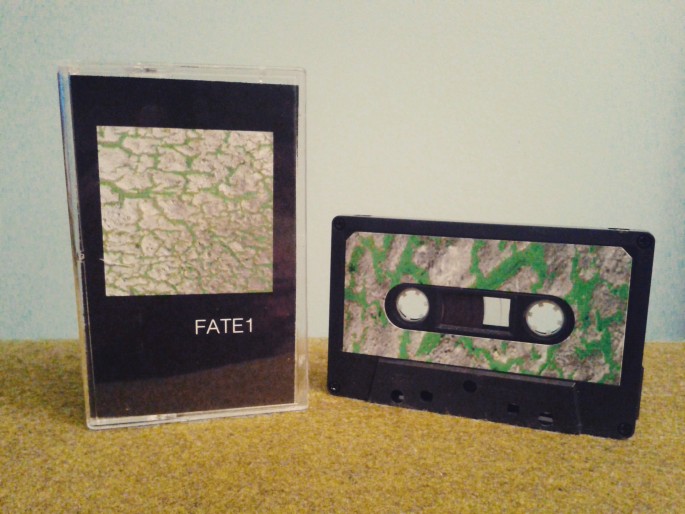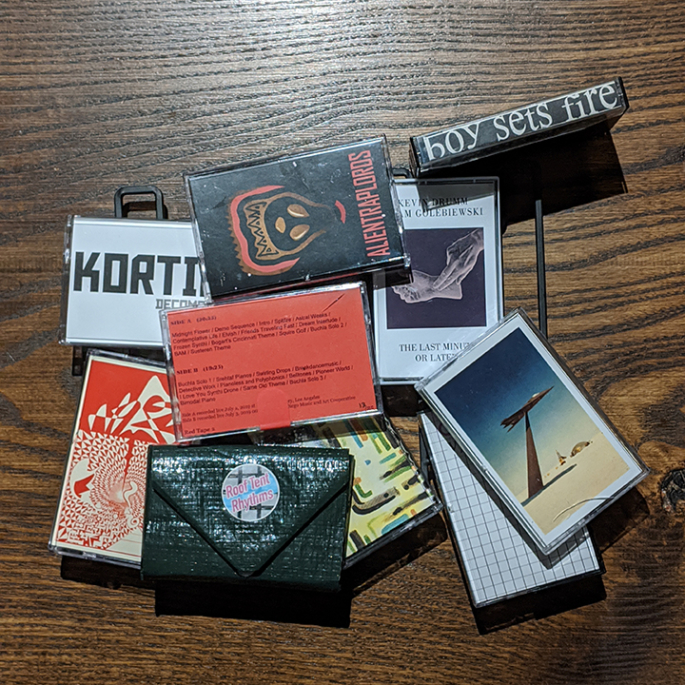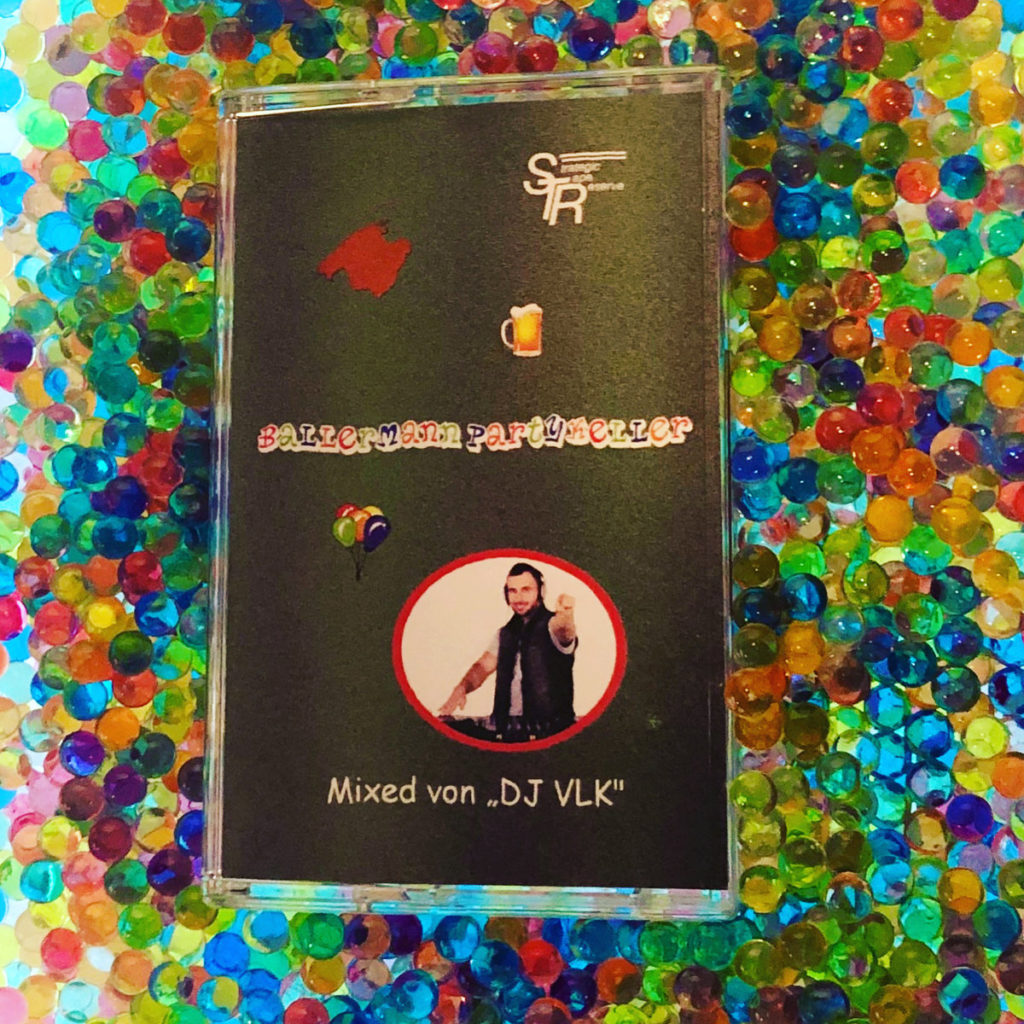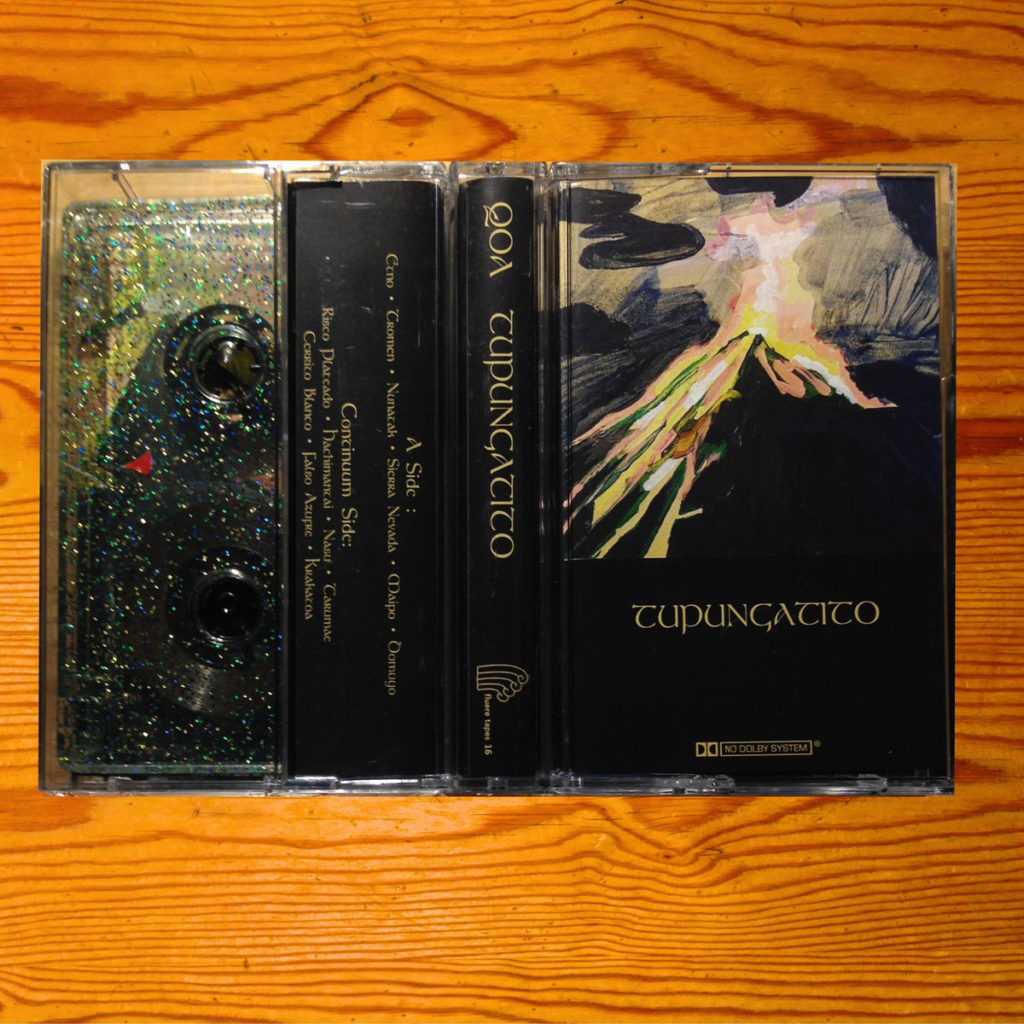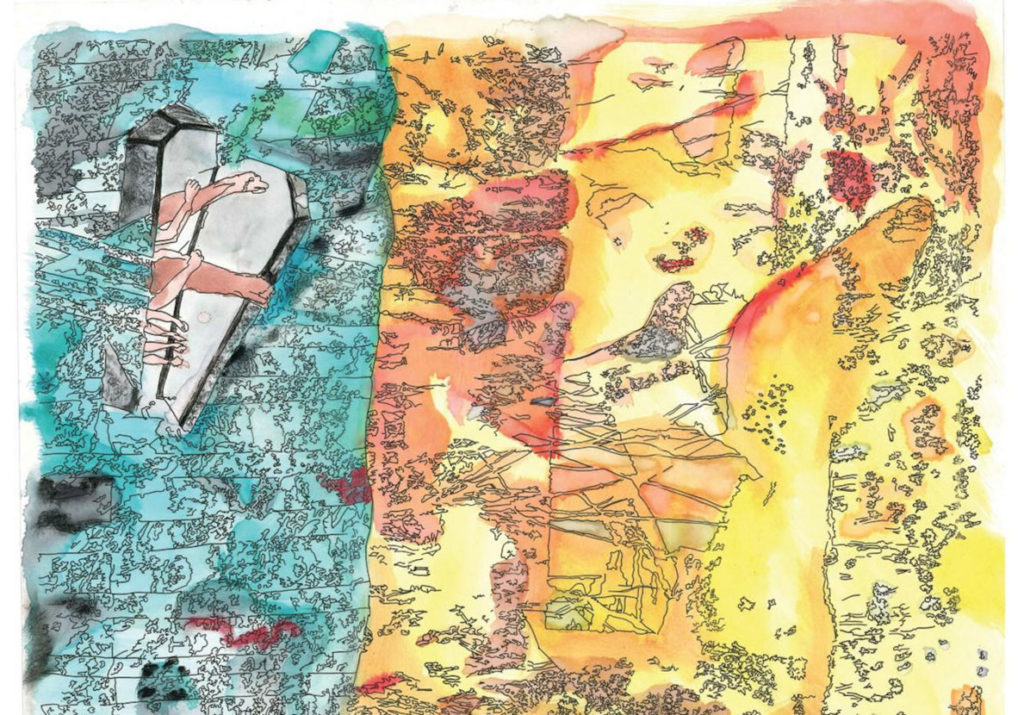2.12.20 by Ryan Masteller
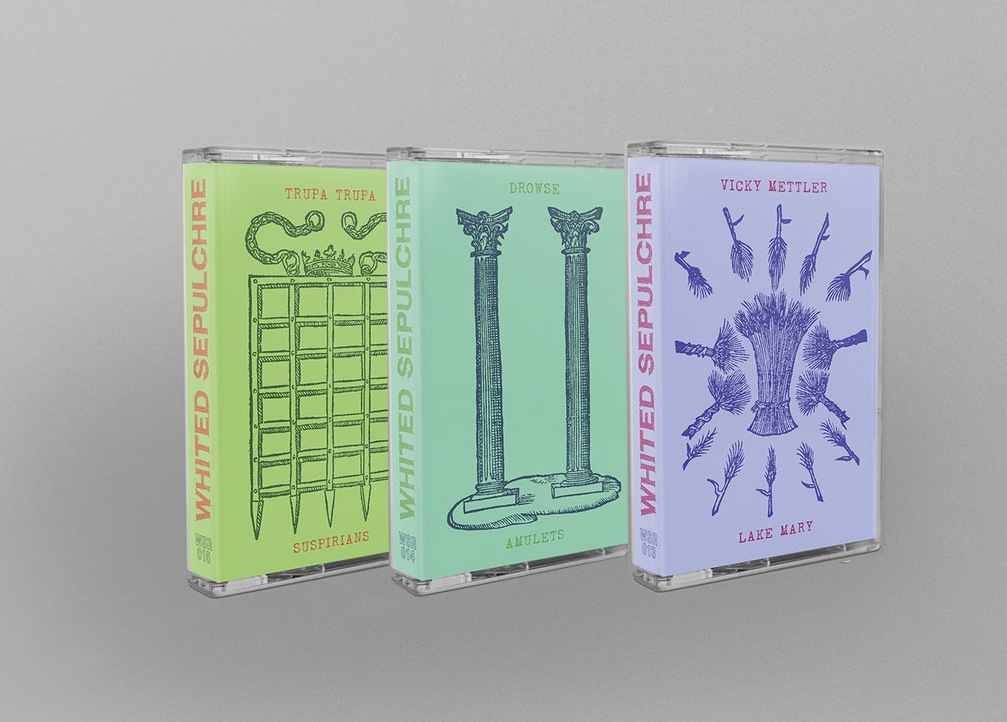
Good, we’re all here. There’s a lot of us this time around, so there’s more than usual to get through. Whited Sepulchre, the Cincinnati label run by the inimitable Ryan Hall, periodically drops these split tapes, and they’re almost always excellent. Check that – they’re always excellent. The one I wrote about last year was excellent. These new ones are excellent. Sounds like a mark of consistency, and you can take that ringing endorsement from me without a grain of salt. Why would you need to take my advice with salt?
VICKY METTLER / LAKE MARY
First up is experimental guitarist Vicky Mettler and experimental guitarist Lake Mary (aka Chaz Prymek), two peas in a cassette-shell pod (as are all of these artists, actually). Mettler drops two 8-plus-minute excursions, written about six years ago and which became something else entirely in their lifetimes. But here we have the unadulterated experimentation Mettler was going through at the time, the harsh downstrokes of “Slie” interspersed with picked notes and other noises. The longer it lasts, the longer it gets under your skin, the more hypnotic and dronelike it becomes, which wasn’t an obvious hallmark at its outset. “Stick,” on the other hand, warbles and wiggles in the tropical wind, sounding like someone warped an old VHS tape of ukulele music. That is until the zither-effect takes over, and cacophony begins to reign. But again, once you relax the ear and let your mind do some work on its own, the intent emerges, but by that time everything starts fading into twinkling oblivion – wracked with distorted stabs of course. How’s Lake Mary even going to remotely top that, you wonder? By pulling back, I reckon. Well, the sidelong “Botanica” certainly takes its time emerging, building itself on gentle and spacious acoustic dronings, the base note a seed planted in our minds and struck at intervals, while tendrils begin to spread from it. The more it’s fed by Lake Mary’s hand, the stronger and faster it grows, until it sprouts through the ground and into the sunlight, reveling in the wind and rain and air.
DROWSE / AMULETS
Drowse is Portland, Oregon’s Kyle Bates, whose project has quite the discography. Indeed, the four tracks appended here are castoffs of sorts from “Light Mirror,” his latest album on The Flenser. Here he relies heavily on field recordings to flavor his dark ambient and shoegaze impulses, vehicles to perpetuate the emotional turmoil of life and loss. The thing is, Bates isn’t really one to wallow, no matter how hard he has to look at the subject matter of his songs. Instead, he faces these things that would cripple others emotionally and allows them to influence the work he does. The results are never less than fascinating, and often harrowing, but just as equally cautiously hopeful. For example, an ill omen blows through “Your Breath Is Wind” until it transforms under drowse’s watchful gaze into forward momentum, personal progress in the face of adversity. Real talk: this is exactly what happens in “A Song I Made in 2001 with My Friend Who Is Now Dead (Director’s Cut),” an obvious attempt to catalog and process the feelings brought up by something as earth-shattering as what’s happening in the title. Is Randall Taylor, aka Amulets, along for the ride here? Not on your life. Also a PDX-er, Taylor, whose lovely ambient guitar and tape-loop genius I’ve covered in the past, is up to the challenge of hanging with Bates on the atmospheric scale. He might not be as flashy, but Taylor makes up for it in pure, unadulterated emotional connection. His heavily treated guitar trickles, blooms, and expands, filling his side of the tape with an aural approximation of the night sky, full of awe and wonder at its size and infinitude. Amulets makes the kind of music you should listen to with your eyes closed, contemplating the wonders of life and the universe while also understanding your place in relation to it all.
TRUPA TRUPA / SUSPIRIANS
It’s been a joy covering Trupa Trupa over the past couple of years, and I was absolutely delighted to see the band from Gdańsk, Poland, popping up here on Whited Sepulchre’s split series. Their brand of psychedelic post-punk with intensely political undertones (frontdude Grzegorz Kwiatkowski is a fascinating poet and researcher, digging into some World War II–related topics on CBC radio documentary “The Invisible Shoes of Stutthof Concentration Camp”) is easy to return to again and again, and their new record “Of the Sun” on Lovitt is a stunner. Here we get “I’ll See,” a sixteen-minute castoff from that record that the band admitted they just couldn’t stop playing. So it sees the light of day here on the A-side, a rumbling kraut jam with ethereal vocals and mesmerizing repetition that expands and contracts the longer it goes, like lungs taking in and expelling breath. It’s paired with “Voice of Rain” by Austin psych-rockers Suspirians, and it’s an inspired match. While Suspirians don’t have as even a keel – or an even keel at all – the trio kick out almost seventeen minutes of dense jammage, just as Texans are bound to do if you give them guitars and drums and such and plug them in. Plus, Suspirians are witches, I think! Which makes their side even cooler. I’m riding that pagan vibe all the way to my own oblivion, riding that nuke till it blows up somewhere way out in the desert.
Related Links

